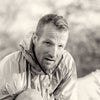By all accounts, endurance coach and sports nutritionist Ben Greenfield walks the walk. The 9:36 Ironman—and often-shirtless purveyor of endurance training and nutritional information—is also an astonishingly fruitful producer of content. He has published 23 books in addition to his countless articles, blogs, podcasts, and videos that hit the Internet on a daily basis.
Greenfield is married with kids. He’s also on a travel circuit that would destroy Marco Polo. As a self-experimenter, Greenfield is systematically taking the newest supplements, collecting his own poo samples, and getting muscle biopsies—so you don’t have to. In his latest book, Beyond Training: Mastering Endurance, Health, and Life, Greenfield offers up his hard-earned knowledge. ���ϳԹ��� caught up with Greenfield at his home in Spokane, Washington, to see how he manages it all.
OUTSIDE: What led you to write Beyond Training?
GREENFIELD: Initially I wanted to write the book for the folks I coach and work with. These are people whose exercise a lot and are doing big things, like adventure races, Ironman competitions, and ultramarathons. Then I realized the sleep issues, mental fog, low libido, and lethargy of these ultra-athletes were also being experienced by CrossFitters and people working out for 45 minutes a day. People who weren’t doing the ultra-crazy stuff. I ultimately wrote it for exercise enthusiasts or people who are past the couch-potato phase—people who have taken that next step.
You use yourself as a test dummy for everything. How do you keep track of it all?
GREENFIELD: Yeah, I’ll generally try anything. Any supplement, biohack, or self-experiment. Using myself as an n=1 for digestion, fat loss, and strength has given me insight you can’t get from just reading the research. As for the practical, I generally do one supplement at a time. Then, I track relevant metrics, including my nervous system, on a daily basis.
How do you deal with the contradictory nature of health and nutrition research?
GREENFIELD: If you really pay attention, it doesn’t contradict itself. You just can’t rely on the media to explain it properly. You have to take what they say with a grain of salt, because they will get it wrong. Look into the research yourself, don’t just read the headlines.
What are the physiological goals of endurance training in general?
GREENFIELD: Anytime we’re trying to improve endurance, what we’re trying to do is increase mitochondrial density, which is associated with an increase in the duration one can exercise. We’re also trying to produce ATP—adenosine triphosphate, the biochemical way to store and use energy—to increase slow-twitch muscle density, glycogen storage, and our body’s ability to burn fat as fuel. There are basically two different pathways to achieve this. One is the traditional polarized training method where you spend 80 percent of your time aerobic and 20 percent going hard, or anaerobic. The other method, which is infinitely more time-effective, is what I call the “ancestral method.”
Can you describe the differences between the traditional method of endurance training and your “ancestral method”?
GREENFIELD: The traditional polarized (80-20) method of endurance training works. It’s what all the best professional athletes are using, and obviously it’s very effective. It’s just not efficient. If I had more time, I’d probably train that way because I enjoy riding, running, and swimming. The problem is it just takes too much time.
Most folks doing these long endurance events aren’t professional athletes. They are working, real people with jobs and lives who simply don’t have the 20 to 40 hours a week to take the traditional, continuous endurance approach.
There is a better way for those of us who aren’t paid to train. The idea here is you hack your environment. You try to spend all day on your feet—with a standing workstation, for instance. You move a lot and avoid the traditional office environment, which is sedentary. Instead, you move through low-level activity all day. Then, two or three times a week, you do short, high-intensity interval training (HIIT). A high level of fitness can be attained with around eight hours a week of Ironman training this way.
The ancestral method sounds a bit like CrossFit Endurance, championed by Brian MacKenzie. How is your method different?
GREENFIELD: CrossFit Endurance tends to do a lot more weightlifting. It also tends to combine a lot of weights with actual endurance training. This method reinforces improper biomechanics because you are forced to continue while heavily fatigued. It also relies upon building metabolic endurance with weights, whereas I think you should focus on the actual metabolic endurance, or HIIT training, while actually engaged in the activity you want to get better at. Use the weight room to build power, not endurance.
The book covers a wide range of options for recovery. What methods do you think are most effective?
GREENFIELD: I’m a fan of cold-hot contrast, of temperature fluctuation. This helps shut down inflammation and improves glucose tolerance. Plus, and this is going to sound cheesy, it just makes you tough.
Another really good one is compression, which helps improve blood flow to your muscles. I’ll even hang from an inversion table throughout the day to get blood through my head.
After hard workouts, I think topical magnesium delivered locally is very effective. Applying it directly on the muscles you want to recover will help mitigate DOMS (delayed-onset muscle soreness). I use magnesium lotion on my muscles every day.
What should our main considerations be when it comes to nutrition?
GREENFIELD: When considering nutrition, I look at nutrient density and digestibility. Quinoa, for example, is very nutrient dense and has a lot of amino acids, but it’s not very digestible—the saponins make it resistant to digestion—but you can make it digestible by soaking it. Then it’s both nutrient dense and digestible. Sugar is super digestible but not very nutritionally dense. I like foods that have high levels of nutrient density and digestibility.
From there, you should try to match the macronutrient profile of our ancestors the best you can: enough protein to maintain nitrogen balance but not toxicity. It’s 40 to 50 percent fat, 20 to 30 percent protein, 10 to 30 percent carbohydrates. This can vary depending on different genetic ancestries, which could mean you might do better on a higher carb intake, for instance.
The message here is that we should not make our food choices based on what our government subsidizes. We can grow grain and corn pretty cheaply, but it’s not what we are hardwired to digest genetically.
The book offers lifestyle and environment suggestions that might surprise many people. What are some of the big ones that everyone can implement?
GREENFIELD: The big one is limiting your exposure to electromagnetic fields. There are literally thousands of studies showing the adverse effects of being constantly exposed to electrical signals. Integrity of cell membranes is compromised and affects neurological tissue. One of the best things you can do is change your environment so you aren’t exposed to it constantly. Turn off your Wi-Fi. I’m hardwired at my house. My cellphone is off all day long unless I need it. I don’t leave things on that I don’t need, and at night I turn off all electricity. I’m very, very careful with my exposure.
Also, be aware that most cleaning products can be harmful. A lot of them are simply toxic. Use natural soaps and shampoos, like Dr. Bronner’s. I use coconut oil as deodorant. If I can’t eat it without dying, I don’t put it on my body because the skin is a mouth.
Sum up the book for our readers.
GREENFIELD: The book is about becoming an optimized human machine. Once you tap into all these pathways, life becomes pretty cool. You can excel in your sport, have a great sex life, good brain function, a gut that works properly, low body fat, and a good-looking body.


